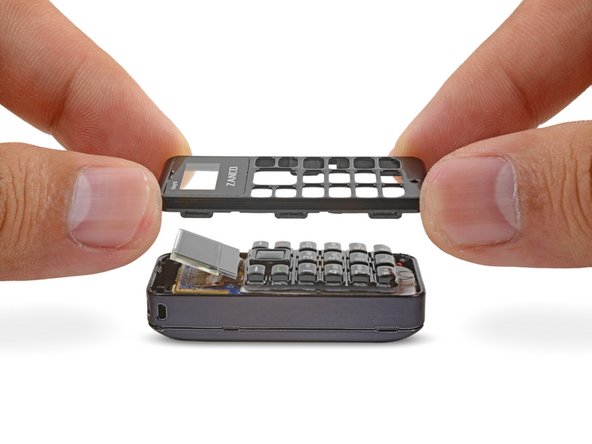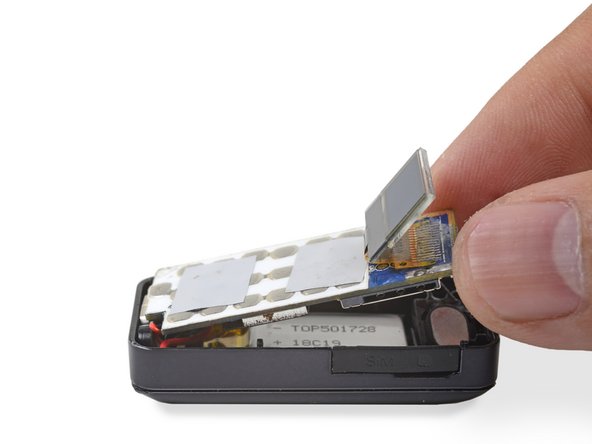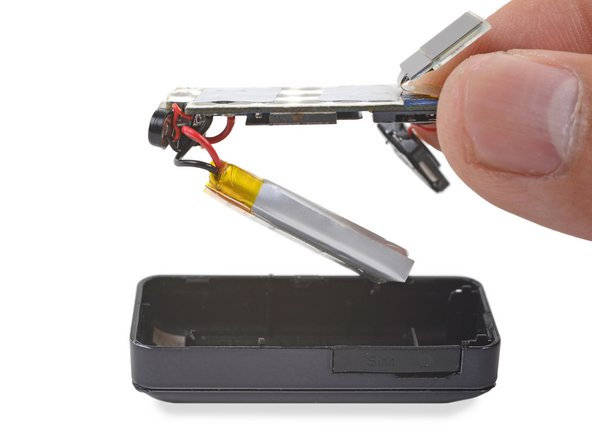Zanco Tiny T1 Teardown
ID: 117613
Description: We’ve seen (and torn down) pretty much...
Steps:
- The Tiny T1 may be small—but is it mighty? We'll let its specs do the talking:
- Mediatek MTK6261D SoC
- 0.49" OLED display with 64 x 32 pixel resolution (146 ppi)
- Built-in voice changer
- 32 MB RAM and 32 MB ROM
- Backlit keyboard
- 2G network connectivity
- MicroUSB port
- For size reference, we've enlisted the help of a certain furry rebel. Don't worry—we'll transport him back to the Rebellion when we're done with him.
- While it's not the most popular tiny phone form factor, the T1's chocolate bar layout makes dialing and texting with human-sized fingers a breeze.
- The metal back case is smooth except for a regulatory sticker and speaker grille. No fragile glass panel to shatter. No unsightly rear camera bump.
- A "micro"-USB port occupies the bottom of the phone—and Zanco has managed to squeeze in a pinhole microphone alongside it.
- Nano is such a relative word, as the "nano" SIM slot dominates the right edge of the phone.
- If you're prone to butt-dialing people, the Tiny T1 is not for you.
- Does size matter? We compare the Tiny T1 to its modern compatriots: a tech writer's LG ENV3 and a Samsung Galaxy S9+.
- Opening a phone of this scale requires specialty tools. Fortunately, iFixit has got it covered.
- Despite its retro aesthetic, this opening procedure is far from obsolete. Some micro spudger action frees up the front clips, and the top plastic plate is free!
- Unlike with some phones, we encounter no proprietary screws here.
- We move the keypad aside and find the button pad soldered to the board beneath.
- To supply backlight to the keypad, two white adhesive pads diffuse light from four surface-mounted LEDs underneath.
- While most modern phones are held together by an army of screws and nasty adhesives, the Tiny T1 has none of that. Zero screws! Zero adhesives!
- The entire innards pop out with a single pry with a (normal) sized spudger.
- The likely lesson here: to easily open normal-sized phones, we need a giant spudger.
- Who says small can't be repairable? (Looking at you, AirPods.)
- Here we have the inner workings of the Tiny T1—all of them. It's just one board, with (nearly) everything soldered to it:
- Speaker
- Microphone capsule
- High tech Bluetooth antenna (it's a wire)
- "Nano" SIM slot, ironically hogging nearly half the board
- Two mysterious pogo pins, which are accessible from outside—possibly for charging? Accessory port? A tiny taser?
- 200 mAh 0.74 Wh battery (for comparison, the ENV3 has 3.5 Wh, while the Galaxy S9+ weighs in at 13.48 Wh)
- While the S9+ battery packs over eighteen times the capacity, we doubt that its standby scales linearly to the Tiny T1's three-day rating.
- What's the bare minimum amount of silicon needed for a functioning mobile phone? We're not sure, but this can't be far off:
- Mediatek MT6261DA SoC
- RDA Microelectronics RDA6625 Front-end module
- Likely li-ion battery charger ic
- 26 MHz oscillator
- That's a wrap to this Tiny Teardown!
- The T1 shows you can make a working phone with just a little hardware—and with technological advancements, you can make it that much little-er.
- We've come a long way from the first mobile phones of over forty years ago, even surpassing the wildest concepts from spy films and science fiction.
- ... Which just means that modern designers of fictional gadgets have to keep upping their game.
- The Tiny T1 earns a 5 out of 10 on our repairability scale (10 is the easiest to repair):
- The phone is held together by clips alone, making the opening procedure easy and painless.
- The front plastic plate, which is prone to cracking, is easily replaceable.
- Most components, including the battery, are soldered to the motherboard, making repairs difficult.


















